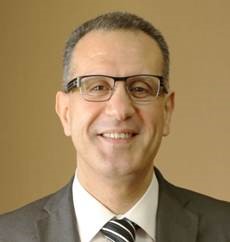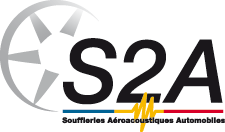- Sunday July 19th, 2015
- Posted by: Christian Vartanian
- Category: News

 |
|---|
3 questions to Karim MIKKICHE, Alliance Global VP CAE & Testing 
Mr Mikkiche, you manage a key sector for the performance of the Renault-Nissan Alliance. What is your vision for the future of automotive?
Automotive still has a bright future, with at least three major challenges ahead. The first of them is the continuous adaptation to environmental issues that guide the regulations on automobile emissions of CO2 and particles, for which Renault is deeply committed. The total or partial electrification of vehicles is an unavoidable tendency to steick to the emission targets. Renault with its Alliance partner today is World leader in the field of 100% electric vehicles.
The second important trend, is the new forms of mobility and usage. The accelerated development of driver aids offer additional comfort and safety, and paves the road to autonomous driving vehicle, while the rise of connectivity on board opens the door to new services related to the automotive.
The third challenge is to offer vehicles that better meet the needs of high growth markets, modern vehicles accessible to the greatest number of persons. It is the ambition of Renault with its new vehicle Kwid designed in India by Indian engineers, for the needs of Indian customers.
Object of passion and source of progress, I think the car will remain a long time. But with the need to constantly learn to adapt, and more and more quickly, at an extremely changing world; and the performance as an indispensable element for maintaining it in a highly competitive environment become.
To what extent are wind tunnel testing important for the Renault-Nissan Alliance in this vision? What is their complementarity with numerical simulations?
The aerodynamic wind tunnel tests, which aim to find the optimum between the style of the vehicle and its drag coefficient, directly contribute to CO2 emissions reduction target. The power of algorithms and machines associated with user friendly graphical interfaces have to make a quantum leap in the aerodynamic simulation. These simulations have gradually replaced some tests among the most defined, and direct the preparation of new experimental campaigns to make them more targeted, more efficient, and therefore less costly.
The aero-acoustic tests aim to improve sound comfort in the cabin. Significant progress to eliminate acoustic discomfort of the engine, make the noises of aerodynamic origin even more noticeable, as the vehicle speed increases.
Tests in an anechoic wind tunnel, such as S2A, are used to locate and characterize the aero-acoustic sources with sophisticated sound imaging processes, and evaluate technical solutions to reduce the nuisance in the cockpit. The experimental data collected by measurement also allow the correlation of integrated CFD model calculations (Computational Fluid Dynamics) / acoustic to make them more representative of reality. These models are used to assess more quickly from other flow conditions, or other vehicle design variations.
Wind tunnel testing and CFD are two methods of simulation of reality that effectively combine throughout the V-cycle development and validation with their advantages and disadvantages. They implement advanced technologies, designed or controlled by our engineers, who provide the essential objective data to the robust design of our vehicles and to the achievement of performance targets.
In this context, how would you describe the role of GIE S2A in a few words? How do you see its future?
GIE S2A is the Renault-Nissan Alliance prime contractor that produces high value-added services. With its two wind tunnels and automotive aero-acoustics experts, it performs almost all the Renault tests on this field for over 11 years. But it is also increasingly a partner for the realization of innovative projects such as “drag module” that still brings the noise test road reality. On the acoustic component precisely, GIE S2A has expertise and equipment that positions his performance at the first European rank.
The future of GIE S2A also involves the development of its business with the Third part customers. Recently, S2A and has successfully opened to other European Automotive OEMs as well as various industry sectors such as Building, Aeronautics, Sport … I also know that it is studying the possibility of extending its offer to new services.
Mr Mikkiche, thank you.


